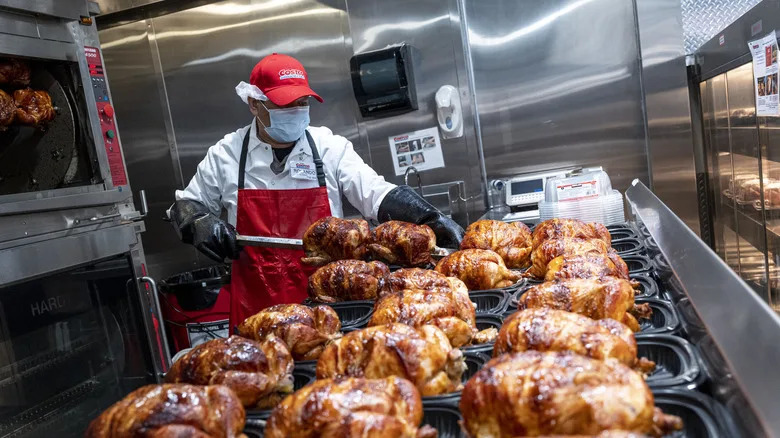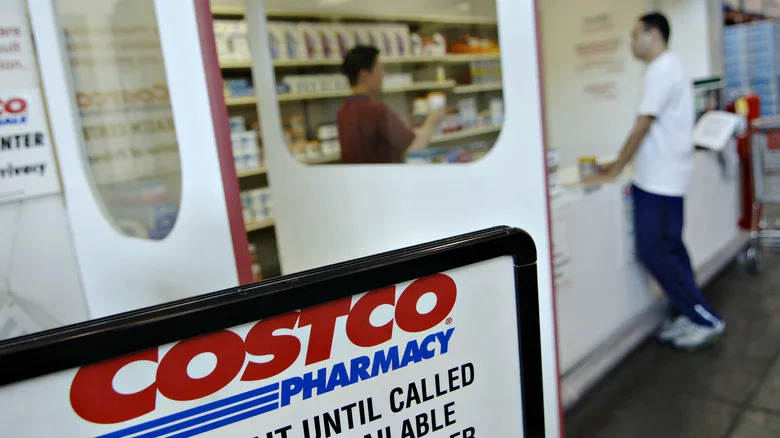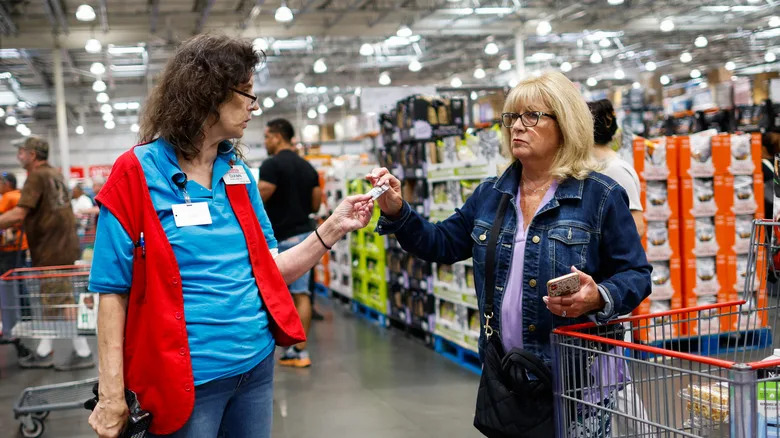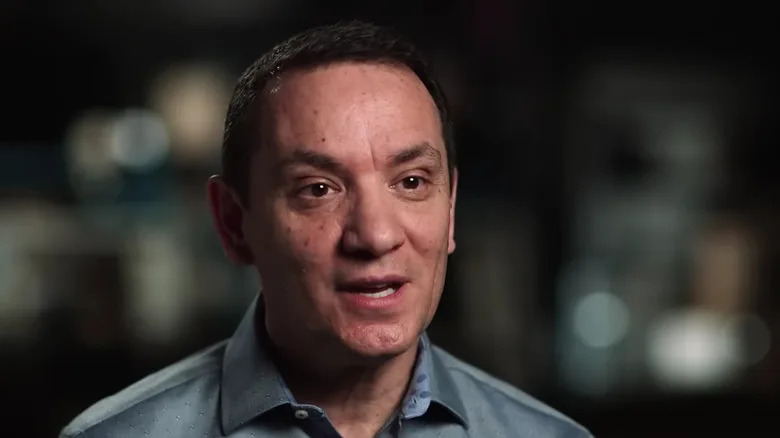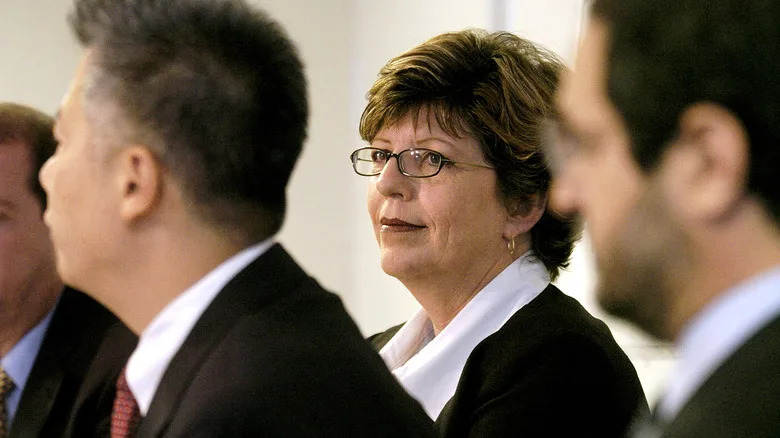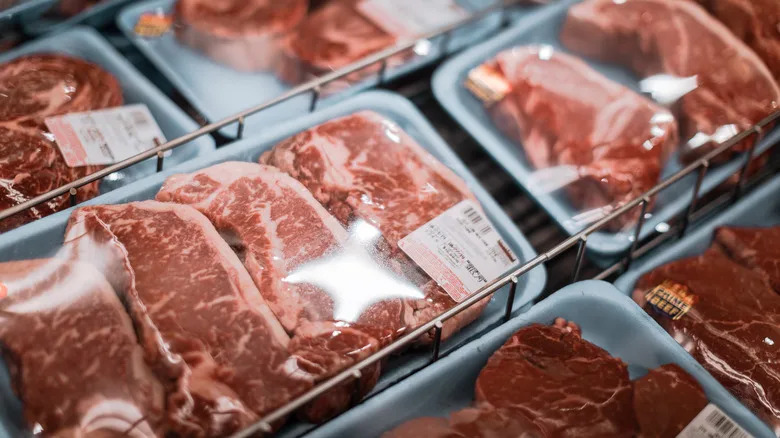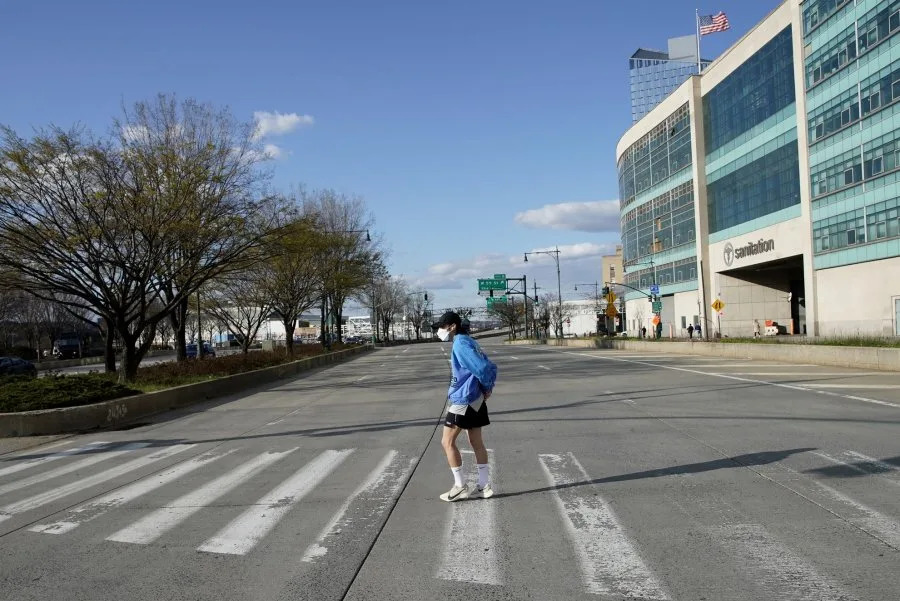The New York Times
The Farmers Had What the Billionaires Wanted
Conor Dougherty – January 21, 2024

RIO VISTA, Calif. — When Jan Sramek walked into the American Legion post in Rio Vista, California, for a town hall meeting last month, everyone in the room knew that he was really just there to get yelled at.
For six years a mysterious company called Flannery Associates, which Sramek controlled, had upended the town of 10,000 by spending hundreds of millions of dollars trying to buy every farm in the area. Flannery made multimillionaires out of some owners and sparked feuds among others. It sued a group of holdouts who had refused its above-market offers, on the grounds that they were colluding for more.
The company was Rio Vista’s main source of gossip, yet until a few weeks before the meeting no one in the room had heard of Sramek or knew what Flannery was up to. Residents worried it could be a front for foreign spies looking to surveil a nearby Air Force base. One theory held the company was acquiring land for a new Disneyland.
Now the truth was standing in front of them. And somehow it was weirder than the rumors.
The truth was that Sramek wanted to build a city from the ground up, in an agricultural region whose defining feature was how little it had changed. The idea would have been treated as a joke if it weren’t backed by a group of Silicon Valley billionaires who included Michael Moritz, a venture capitalist; Reid Hoffman, an investor and co-founder of LinkedIn; and Laurene Powell Jobs, the founder of the Emerson Collective and the widow of the Apple co-founder Steve Jobs. They and others from the technology world had spent some $900 million on farmland in a demonstration of their dead seriousness about Sramek’s vision.
Rio Vista, part of Solano County, is technically within the San Francisco Bay Area, but its bait shops and tractor suppliers and Main Street lined with American flags can feel a state away. Sramek’s plan was billed as a salve for San Francisco’s urban housing problems. But paving over ranches to build a city of 400,000 wasn’t the sort of idea you’d expect a group of farmers to be enthused about.
As the TV cameras anticipated, a group of protesters had gathered in the parking lot to shake signs near pickup trucks. Inside, a crowd in jeans and boots sat in chairs, looking skeptical.
Sramek, 36, who is from the Czech Republic and had come to California to try to make it in startups, was now the center of their economy. Flannery had become the largest landowner in the region, amassing an area twice the size of San Francisco.
Christine Mahoney, 63, whose great-grandfather established her family’s farm when Rutherford B. Hayes was president, said that, like it or not, Sramek was now her neighbor. Mahoney had refused several offers for her land, and Flannery’s lawsuit — an antitrust case in federal court — described her as a conspirator who was out to bilk his company.
But she had never met the man in person, so she came to say hello.
“You might be asking yourself, ‘Why is this guy with a funny accent here?’” Sramek began the meeting.
He spent about 20 minutes pitching his plans before submitting to questions and resentments. People accused him of pushing small farms out of business. They said Flannery’s money was turning families against each other.
“Good neighbors don’t sue their neighbors!” one man yelled to applause.
Sramek, who is tall, intense and practiced in the art of holding eye contact, stayed up front after the meeting to glad-hand.
When Mahoney and her husband, Dan, 65, approached him, Sramek said, “Hi, Christine!” as if they had met several times before and he wasn’t currently suing her.
“I’d like to welcome you as our neighbor, but it’s kind of difficult,” Christine Mahoney said.
She talked about how much stress the lawsuit had put on her family.
Sramek nodded, as if she were talking about someone else, not him. Then he asked the couple to dinner. The Mahoneys agreed.
Going to the Ballot
One key difference between building an app and building a city is that a city requires permission. On Wednesday, Sramek’s company officially filed a proposed ballot initiative that would ask voters to buy in. Specifically, the measure aims to amend a long-standing “orderly growth” ordinance that protects Solano County’s farms and open space by steering development to urban areas.
Solano’s residents have consistently backed the city-centered-growth laws, so Sramek’s project is bound to be controversial. To overcome resistance, the initiative includes a long list of promises like new roads, money to invest in downtowns across the county and a $400 million fund to help Solano residents buy homes.
Sramek also revealed that he hoped to build directly next to Rio Vista, with a half-mile-wide park separating the old farming town from the new tech city. Renderings that his company released this month portray a medium-density community that is roughly the opposite of a subdivision, with a grid of row houses that lie a short walk from shops and have easy access to bike lanes and bus stops. He said the first phase of building could accommodate about 50,000 people.
Even if the measure gets on the ballot and passes, it will be one step on a path requiring approval from county, state and federal agencies — a long list of ifs that explains why large projects are usually measured in decades, not the few years that Sramek seems to imagine.
It’s a crucial step, however. Beyond amending the ordinance, a win would pressure county officials to work with Sramek, so opponents are already lining up. A group called Solano Together, a mix of agricultural and environmental organizations like Greenbelt Alliance, recently created a website that characterizes the project as harmful sprawl that would destroy farms.
The fight is something of a throwback. Whether it was paving over San Fernando Valley orange groves to build out Los Angeles or ripping out apricot farms in what is now Silicon Valley, California became the nation’s biggest state and economy largely by trading open and agricultural land for population and development.
That shifted in the 1960s and 1970s, when a backlash against the growth-first regime and its penchant for destroying landscapes helped create modern environmentalism. In the half-century since, this turn has been codified in laws that aim to restrict development to existing cities and their edges. It has protected farms and open space, but also helped drive up the cost of living by making housing scarcer and more expensive to build.
Sramek framed his proposal as a backlash to the backlash, part of an ideological project to revive Californians’ appetite for growth. If the state is serious about tackling its dire affordable housing problem, he argued, it doesn’t just have to build more housing in places like San Francisco and its suburbs — it also has to expand the urban footprint with new cities.
As a matter of policy, this is hard to dismiss. This is politics, however, so the bigger question is whether voters share his desire to return California to an era of expansion. And whether — after six years during which Sramek obfuscated his role in Flannery’s secret land acquisition, along with the company’s billionaire backers and true purpose, all while pursuing farmers with aggressive tactics and lawsuits — they find him trustworthy.
The Golden Boy vs. 1877
Christine and Dan Mahoney’s house looks onto a barn that says 1877, the year Christine Mahoney’s great-grandfather built it.
When I met the couple for an interview at their house last year, Christine Mahoney had decorated the dining table with black-and-white pictures of relatives in button dresses and bonnets. Later we drove along roads named for her ancestors.
Winding through the hills, Christine Mahoney ticked off parcels that belonged to the family, others that were owned by neighbors and more owned by Flannery. When I asked how she discerned the lines of ownership in an expanse of yellow grassland, she said: “You live here a hundred years.”
Sramek, meanwhile, talks about growth in moral terms, as if progress and wealth are simpatico and the most consequential people are those who build big things and a fortune along the way.
Driving near the Mahoneys’ ranch recently, through the same yellow hills, he posited that the mix of wealth and innovation that has exploded in the Bay Area has happened only a handful of times in history. (Florence, Paris, London, New York, Chicago and “maybe LA” were some others.) We were 60 miles from San Francisco in a place where the tallest structures are wind turbines, but his message was that the region could be an economic sun, and that bringing more people in the orbit was worthy of the trade-offs.
An immigrant and striver who at 22 was a co-author of a book called “Racing Towards Excellence,” Sramek got his first spurt of publicity at Goldman Sachs, where the financial press hailed him as a “Golden Boy” trader and considered it newsworthy when he left, after two years of employment, to chase a bigger dream in startups.
His tech career was less sparkling. After Goldman, he moved from London to Zurich and started a corporate education company called Better. It operated for two years and prompted a move to San Francisco, where he founded a social media company, Memo, in 2015.
Memo was billed as a higher-minded version of Twitter and won praise from venture capitalist Marc Andreessen. That praise was delivered on Twitter instead of Memo, which was pretty much the story: Memo failed to rack up users and shut down after a year.
His failures aside, Sramek was smitten with the Bay Area’s culture of creative capitalism. He was less enamored with the actual place.
The mythical Silicon Valley was in reality a bunch of office parks and cul-de-sacs where subdivision-grade homes went for $2 million. The more picturesque and urban San Francisco was being consumed by rising rents and their attendant homeless problems.
Complaining about the cost of living, and the region’s inability to fix it, had become something of a side hustle for many Bay Area CEOs. And after Memo, Sramek started looking for a big disruptive idea for them to fund.
“If we go back six or seven years, the popular hit in the press was ‘Silicon Valley is not doing enough in the real world,’” he said. “And I was sitting there working on this.”
Flannery Associates
Sramek likes to fish. The way he tells it, around 2016 he and his girlfriend (now wife) started making the one-hour drive from San Francisco to Rio Vista to catch bass on the Sacramento River. One of those trips, driving past pastures and grazing sheep, sparked an idea.
“What if you could start from scratch?” he said.
In a state whose agricultural bounty has historically been a function of moving water great distances, the area is something of an anachronism. For generations, families like the Mahoneys have practiced “dryland farming,” which means they rely on rain, not irrigation.
The Mahoneys talk about this the same way they talk about their land and family: with an emphasis on tradition and the romance of continuity. Sramek described the land as “not prime.”
The phrase angered several farmers at the Rio Vista town meeting, but in dollar terms it’s accurate. At the time of Sramek’s first fishing trip, land in the area was trading around $4,000 an acre — a pittance compared with a Central Valley almond orchard (about $10,000 to $55,000 per acre) or a Napa Valley vineyard (anywhere from $50,000 to more than $500,000 per acre), according to the California chapter of the American Society of Farm Managers and Rural Appraisers.
Sramek starting doing research and soon found himself immersed in zoning policy and poring over old development maps dreaming of a startup city. Investors were initially reluctant, he said, so he borrowed $1 million from friends and banks to put a deposit on a handful of properties, then hired consultants and land-use lawyers to assess what it would take to build there.
By now Sramek was well networked. He had done a fellowship at Y Combinator, a startup incubator. He was in a book club with partners at Sequoia Capital. He was friends with billionaires like Patrick and John Collison, the sibling founders of the payments company Stripe.
The Collisons became two of Flannery’s first investors. Andreessen and Chris Dixon, also of the Andreessen Horowitz venture capital firm, joined soon after, along with Moritz, who was Sequoia’s chair. All of them helped Sramek solicit others.
In a 2017 note to potential investors I obtained, Moritz wrote that if “done right” the project could help relieve congestion and housing prices in the Bay Area, and mused about the potential to experiment with new kinds of governance. It could also be spectacularly profitable, he said: Moritz estimated that investors could make 10 times their money even if they just got the land rezoned, and far more if and when it was developed.
Flannery Associates was named for Flannery Road, which borders the first property Sramek bought. Aside from that detail and its Delaware incorporation, residents and public officials could find almost nothing about its shareholders or intentions. Just that it wanted a lot of land, didn’t care about the price and was willing to strong-arm owners when money didn’t work.
In addition to working their own land, many farmers in the area lease parcels where they grow crops and graze animals. As Flannery consumed more and more property, people like Ian Anderson found themselves in the uncomfortable position of trying to rebuff its offers for parcels they owned — while at the same time farming land they rented from Flannery.
Anderson learned how vulnerable he was after a local newspaper quoted him saying that the company had begun insisting on short-term leases and that this made it increasingly difficult to farm. Later, Flannery’s lawyer sent him a letter informing him that it was terminating multiple leases covering thousands of acres.
“The Andersons have made it clear that they do not like Flannery,” according to the letter. “The Andersons are of course free to have their opinions, but they cannot expect that Flannery will continue to just be a punching bag and lease property to them.”
Rep. John Garamendi, a Democrat from the area, characterized moves like this as “mobster techniques.” The bigger concern was that Flannery’s holdings had grown into a giant mass that butted against Travis Air Force Base on three sides.
The proximity to the base alarmed both the county and the Department of Defense, which prompted local officials and members of Congress to call for investigations. The investigations elevated the mystery of Flannery Associates into a mainstay on local TV news.
“The FBI was investigating this, the State Department was investigating this, the Treasury Department was investigating this — all the local electeds were trying to get information and calling their legislators,” said Rep. Mike Thompson, another Democrat from the area.
The company remained silent.
Sramek said Flannery had operated in secret to prevent landowners from jacking up prices, and defended the lawsuits as just. He argued that while some farmers didn’t want to sell, most had done so willingly — at prices no other buyer could offer.
“We paid way over market value, and created hundreds of millionaires in the process,” he said. “We are glad that we have been able to settle most of our disputes, and we are open to settling the remaining ones.”
A Simple Case of Wealthy Landowners?
By 2023, Sramek and his investors were in deep. Flannery had spent some $900 million buying 60,000 acres. The first two rounds of funding, at about $10 million each, had ballooned to several more rounds at $100 million each. (Sramek said the company had now raised “more than $900 million” but would not be more specific.)
Big investors begot bigger investors, and the list expanded to a roster of Silicon Valley heavyweights including Hoffman and Powell Jobs.
The company’s offers became so generous that many farmers decided they couldn’t refuse.
The Mahoneys sold Flannery a few hundred acres early on. (Their land is owned by several different entities and hard to tally overall, but in the 1960s Christine Mahoney’s father told a newspaper that he had 16,000 acres in the area.) But as Flannery gobbled more of the land around them, Christine Mahoney said, she realized that something big was happening and that their entire farming business could be at risk. So the family stopped selling to Flannery. The company persisted with more offers, however, improving terms and increasing prices to levels that would have netted tens of millions of dollars. The family continued to say no.
Flannery arrived while the Mahoneys were in the midst of transition. Over 150 years, the family’s company, R. Emigh Livestock, had expanded from two dozen lambs to one of largest sheep farmers in California. Christine Mahoney’s father was in his 90s (he died last year) and she was passing leadership to her son Ryan, who said his wish was to stay there until he was in his 90s, too.
You wouldn’t know it from her jeans or penchant for nostalgia, but Christine Mahoney had spent her career running a corporation, one whose business was raising lambs and cattle. She was, like Sramek, a CEO.
And after years of back and forth, one thing Flannery’s entreaties had made clear was that there was one property the Mahoneys owned that it coveted above the others: Goose Haven Ranch. But Goose Haven was the one the family was most protective of. It had been the center of the lambing operation long enough that the road leading up to it was designed for wagon traffic.
Elsewhere in the county, Flannery had started buying into farms by acquiring shares from family members who wanted out, then becoming what amounted to unwelcome partners with the ones who remained. Two of these arrangements led to lawsuits between Flannery and the other owners. Both settled, but one of them netted a trove of emails and text messages among several neighbors including the Mahoneys.
In May, Flannery used those messages to file an antitrust suit against the Mahoneys and several holdouts. The suit contended that the farmers were colluding to raise prices, describing them as “wealthy landowners who saw an opportunity to conspire, collude, price fix and illegally overcharge Flannery.” It asked for $510 million in damages.
The complaint describes the messages (like Christine Mahoney writing to a neighbor, “That’s great that we can support each other!”) as “a smoking gun” proving that the defendants did want to sell but at even higher prices than Flannery was offering.
In a joint motion to dismiss, lawyers for the Mahoneys and other defendants described Flannery’s lawsuit as “a ham-fisted intimidation technique” designed to smother them with legal fees.
Even after being sued, the Mahoneys still had no idea who Flannery actually was.
The Campaign Apology Tour
In August, The New York Times broke the news of who was behind the purchases. Sramek confirmed his role, and soon topped his LinkedIn profile with a new title: CEO of California Forever, the company’s new name.
He has been in campaign mode ever since, meeting with elected officials, union leaders and environmental groups. California Forever has opened four offices across the county, and Solano’s freeways are now plastered with California Forever billboards.
In a state where it can take years to get a duplex approved, Sramek seems to have calculated that his project is too big to fail. Developers, planners and lawyers I spoke to all expected the project to either never happen or take at least 20 years. Whether out of bluster, delusion or confidence, Sramek, who recently bought a house in nearby Fairfield, said he had promised his wife that their infant daughter would start school in the development he wanted to build.
He didn’t find some secret hack that can make California an easier place to build. Rather, he believes the state’s attitude toward growth is changing. Californians, he thinks, have grown frustrated — with punishing housing costs, with homelessness, with the state’s inability to complete projects like the high-speed rail line that was supposed to connect the Bay Area and Los Angeles but has stalled. So just maybe his will, and gobs of money, can create a new posture toward growth.
“There’s a cultural moment where we realize the pendulum has gone too far,” Sramek said. “We can’t say we are about economic opportunity and working-class Californians are leaving the state every year.”
Last year’s event in Rio Vista was held at the end of lambing season in December. Before the meeting, I dropped by a barn with the Mahoneys where a group of “bummers” — lambs born weak or to overburdened ewes — were in sawdust pens drinking milk. They would be chops in less than a year, and Christine Mahoney cooed to them between my questions.
I asked her a crass but obvious one: why the money from Sramek, those tens of millions, wasn’t enticing.
“Everybody has their price, right?” she said. “I’ve heard that so many times. ‘Everybody has their number — what’s your number?’ I guess I haven’t found it yet.”
“When God calls us home, that’s our number,” Dan Mahoney joked. “Totally different philosophy.”
On Wednesday, Sramek returned to the American Legion post in Rio Vista. This time he had arrived as part of a kickoff event for the ballot initiative. Neighbors and protesters had returned but were prohibited from going inside, where slides of maps and renderings were presented to the press, and details about design were discussed.
The maps had a curious detail: On the edge of the proposed community’s downtown, was Goose Haven Ranch.
The night before the meeting, the Mahoneys sold it. They got about $23 million.


 Scroll back up to restore default view.
Scroll back up to restore default view.









